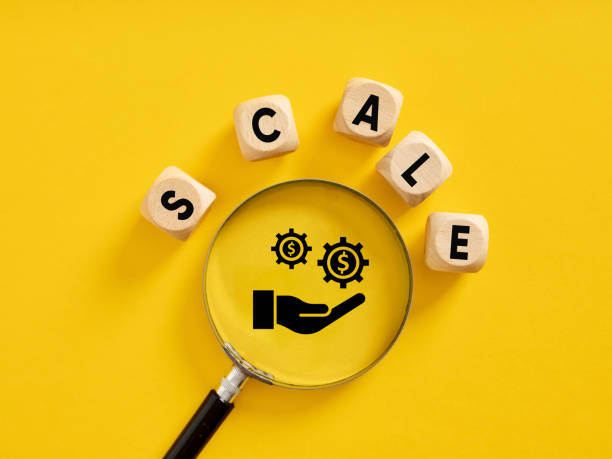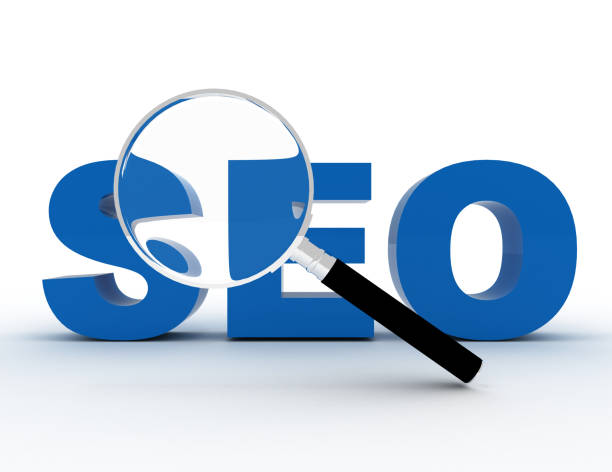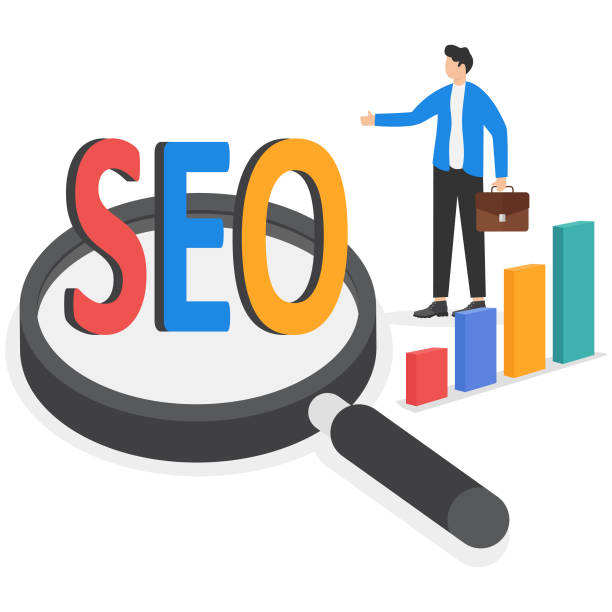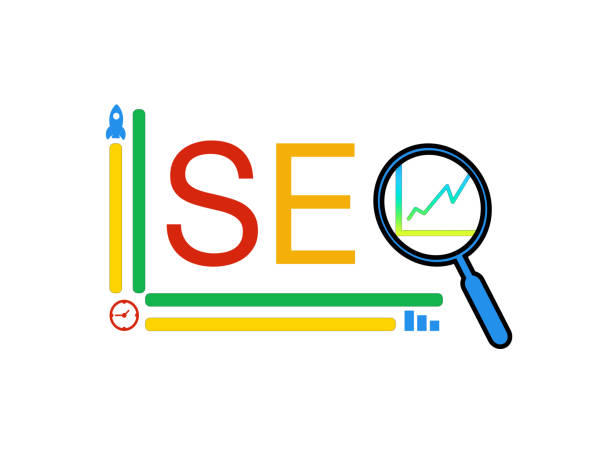### What is On-Page SEO and Why Does it Matter?

On-page SEO is a set of techniques and actions performed within your website to improve the site’s ranking in Google search results.
These actions include optimizing content, site structure, HTML tags, and more.
The importance of #OnPageSEO is that it helps search engines better understand your site’s content and display it to relevant users.
Without strong on-page SEO, even with the best content, your site may be on the lower pages of search results and receive less organic traffic.
The importance of on-page SEO becomes clearer when we know that Google and other search engines seek to provide users with the best and most relevant results.
By optimizing on-page SEO, you help these engines identify your site as a reliable and relevant source.
This increases the site’s ranking in search results and ultimately attracts more organic traffic to your site.
On-page SEO is not only limited to keywords but also includes user experience, site speed, and other factors that we will discuss later.
Learn more about on-page SEO
In short, on-page SEO is one of the fundamental pillars of success in the online world, and without it, your efforts to produce content and online marketing will not achieve the desired result.
By performing on-page SEO correctly and consistently, you can improve your site’s ranking and attract more organic traffic.
Did you know that 85% of customers check your company’s website before any interaction?
Build a corporate website worthy of your credibility with Rasaweb.
✅ Increase customer credibility and trust
✅ Attract high-quality leads
⚡ Get a free website design consultation
Keyword Research – The Cornerstone of On-Page SEO

Keyword research is the first and most important step in on-page SEO.
Keywords are the phrases that users use to search for information on Google and other search engines.
By identifying the right keywords, you can create content for your site based on user needs and interests.
To conduct keyword research, you can use various tools such as Ahrefs, Keywordtool.io, and Google Trends.
These tools help you identify keywords related to your business and check their search volume.
After identifying the keywords, you should use them naturally and relevantly in your site’s content.
Excessive use of keywords can result in your site being penalized by Google.
When choosing keywords, pay attention to their competition.
High-competition keywords are usually more difficult to rank than low-competition keywords.
It is best to use a combination of high and low-competition keywords in your SEO strategy.
Long-Tail Keywords can also be a good opportunity to attract targeted traffic.
These words usually have less competition and direct specific users to your site.
For example, instead of the keyword “shoes,” use the phrase “buy cheap men’s sports shoes.”
Optimizing Title and Meta Descriptions – Attracting Clicks from Search Results

The Title Tag and Meta Description are two important elements in on-page SEO that appear in Google search results.
The title tag is the main title of the page that appears at the top of the browser and in search results.
The meta description is a short summary of the page content that appears below the title in the search results.
Optimizing these two elements can significantly impact attracting clicks from search results.
The title tag should be attractive, relevant to the content, and include the main keyword.
The length of the title tag should not exceed 60 characters.
The meta description should also be concise, attractive, and include the main keyword.
The length of the meta description should not exceed 160 characters.
The title and meta description are the first things users see in search results.
Therefore, you should try to write them in a way that encourages users to click on your site link.
Use powerful keywords and phrases that create a sense of curiosity in users.
Also, make sure that the title and meta description match the content of your page.
Using misleading title and meta descriptions can reduce the bounce rate and, consequently, reduce your site’s ranking.
For example, suppose you want to optimize a page about “On-Page SEO Training.”
The page title can be: “Comprehensive On-Page SEO Training 2024 – Step by Step and Practical.”
The meta description can also be: “In this article, you will learn complete on-page SEO training step by step with practical examples.
Start now!”
| Topic | Optimized Title |
|---|---|
| Buying a Mobile Phone | Buy a Mobile Phone at the Best Price | Online Store … |
| English Language Training | Online English Language Training – Free and with Experienced Teachers |
| Hotel Reservation | Online Hotel Reservation with Special Discount | Best Hotels in … |
Content Optimization – The King of On-Page SEO

Content is the king of on-page SEO.
Producing high-quality, relevant, and valuable content is one of the most important factors for success in SEO.
Your content should answer users’ questions, solve their problems, and provide them with useful information.
High-quality content not only attracts users but also increases their dwell time on your site.
High dwell time shows Google that your site is valuable to users and, as a result, improves your site’s ranking.
To optimize content, you must first identify the appropriate keywords and use them naturally and relevantly in your content.
Also, your content should be readable and understandable.
Use short paragraphs, headings and subheadings, images, and videos to break up the text and make it more attractive.
Make sure your content is unique and non-repetitive.
Copying other people’s content can result in your site being penalized by Google.
Update your content regularly.
Old and outdated information can negatively impact your site’s ranking.
By updating your content, you show Google that your site is active and up-to-date.
Producing high-quality content requires time and effort, but the result will be increased organic traffic and improved site ranking.
Did you know that a weak corporate website takes away many opportunities from you every day? Solve this problem forever with a professional corporate website design by Rasaweb!
✅ Create a powerful and reliable image of your brand
✅ Attract targeted new customers and increase sales
⚡ [Get a free website design consultation]
Image Optimization – Visual On-Page SEO

Images play an important role in the attractiveness and better understanding of content.
But images are not only useful for users, but they can also help with your site’s on-page SEO.
To optimize images, you must first save them in the appropriate format (such as JPEG or PNG).
Reduce the size of the images as much as possible to increase the page loading speed.
Use the Alt tag to describe the images.
The Alt tag is the text that is displayed to the user if the image is not displayed.
This tag helps Google understand the content of the image.
The Alt tag should be short, relevant to the image, and include the main keyword.
Optimize the image file names as well.
Use descriptive names and include keywords.
For example, instead of the file name “IMG_1234.jpg,” use the file name “on-page-seo-training.jpg.”
Using high-quality images can greatly impact the attractiveness of your site.
But remember that high-quality images usually have a larger size.
Therefore, you must strike a balance between image quality and size.
Use image compression tools to reduce image size without loss of quality.
TinyPNG is one of these tools.
By optimizing images, you can also improve your site’s ranking in Google image search results.
This can attract more traffic to your site.
On-page SEO in images can have a significant impact on your site’s SEO.
URL Structure – SEO-Friendly Addresses

URL structure plays an important role in on-page SEO and user experience.
SEO-friendly URLs are URLs that are readable, understandable, and include the main keyword.
A good URL helps users and search engines easily understand the content of the page.
To create SEO-friendly URLs, use keywords related to the content.
Use lowercase letters and hyphens (-) to separate words.
Avoid using uppercase letters, numbers, and special characters.
Keep URLs short and concise.
Avoid creating long and complex URLs.
For example, instead of the URL “example.com/page?id=123”, use the URL “example.com/on-page-seo-training”.
Organize your site’s URL structure logically and hierarchically.
This helps users and search engines easily navigate your site.
Avoid creating Orphan Pages.
Orphan pages are pages that have no internal links to them.
These pages are not accessible to search engines and do not rank.
Optimizing the URL structure is an important aspect of on-page SEO.
By following the principles of SEO-friendly URLs, you can improve your site’s ranking and enhance the user experience.
Internal Linking – Creating a Network of Connections

Internal linking is the process of creating links between different pages of a website.
Internal linking helps search engines better understand your site’s structure and identify more important pages.
Also, internal linking improves the user experience and directs users to other relevant pages.
To perform internal linking, use appropriate anchor text.
Anchor text is the text that links to another page.
The anchor text should be relevant to the content of the destination page and include the main keyword.
Give more links to more important pages.
This shows Google that these pages are more valuable to users.
Avoid creating too many links.
Too many links can confuse users and search engines.
Place your links naturally and relevantly in the text.
Irrelevant and unrelated links can negatively impact your site’s ranking.
The Importance of Internal Linking in on-page SEO is very high and should be given special attention.
| Destination Page | Optimized Anchor Text |
|---|---|
| SEO Training | Click to Learn SEO |
| Buy Hosting | Best Hosting for Your Website |
| Website Design | To Order Professional Website Design |
Site Speed – User Experience and On-Page SEO

Site speed is one of the important factors in user experience and on-page SEO.
Users expect website pages to load quickly.
If your site’s loading speed is slow, users will quickly leave your site, and this will negatively impact your site’s ranking.
Google also values site speed, and sites with higher loading speeds rank better.
To increase site speed, use optimized images.
Reduce the size of the images as much as possible.
Use an optimized Content Management System (CMS).
Optimized CMSs generate less code and increase site speed.
Use speed optimization plugins.
Plugins like WP Rocket can help you optimize site speed.
Use a CDN (Content Delivery Network).
A CDN stores your site’s content on different servers around the world and selects the closest server to load content for users.
This greatly increases the site’s loading speed.
By improving site speed, you can enhance the user experience and improve your site’s ranking in search results.
On-page SEO requires you to pay close attention to the site’s loading speed.
Are you lagging behind in competition with large online stores?
Rasaweb will put your business online and increase your market share with professional online store website design!
✅ Increase brand credibility and customer trust
✅ Easy shopping experience leads to more sales
⚡ Act now to receive a free website design consultation!
Mobile-Friendly – On-Page SEO for the Mobile World

Today, most users access the Internet through mobile devices.
Therefore, being mobile-friendly is one of the important factors in on-page SEO.
A mobile-friendly site is a site that is displayed correctly on mobile devices and users can easily navigate it.
Google also values the mobile-friendliness of sites, and sites that are mobile-friendly rank better.
To make your site mobile-friendly, use Responsive Design.
Responsive design allows your site to automatically adapt to the screen size of different devices.
Use readable fonts and large buttons.
This makes it easier for mobile users to navigate the site.
Optimize the site’s loading speed on mobile devices.
Mobile users usually use low-speed internet.
Therefore, your site’s loading speed must be high on mobile devices.
Check the Google Mobile-Friendly Test tool and fix any potential problems.
By making your site mobile-friendly, you can enhance the user experience and improve your site’s ranking in mobile search results.
Modern on-page SEO makes no sense without paying attention to the site’s compatibility with mobile.
Review and Analysis – Dynamic On-Page SEO

On-page SEO is a dynamic and continuous process.
After taking on-page SEO actions, you should regularly review and analyze the results and make necessary changes if needed.
To review and analyze the results of on-page SEO, you can use various tools such as Google Analytics and Google Search Console.
Google Analytics provides you with information about site traffic, user behavior, and conversion rates.
Google Search Console gives you information about site ranking, keywords, and site errors.
By reviewing this information, you can identify the strengths and weaknesses of your on-page SEO and take the necessary actions to improve it.
For example, if you notice that the bounce rate of one of your site’s pages is high, you should optimize the content of that page or fix its technical problems.
You should also regularly follow changes to Google’s algorithms and adjust your on-page SEO strategy based on them.
Successful on-page SEO requires continuous review and analysis.
Remember that on-page SEO is a long-term investment.
On-page SEO results are achieved over time and with continuous effort.
Therefore, be patient and regularly take your on-page SEO actions.
By doing on-page SEO correctly and consistently, you can improve your site’s ranking and attract more organic traffic.
Frequently Asked Questions
| Question | Answer |
|---|---|
| What is On-page SEO? | On-page SEO refers to a set of actions that are performed inside your website to improve its ranking in search engine results. This includes optimizing content, site structure, and HTML code. |
| Why is On-page SEO Important? | On-page SEO helps search engines understand the content of your page and determine whether your content is relevant to searchers or not. This is the foundation of any successful SEO strategy. |
| What are the Key Elements of On-page SEO? | Page Title (Title Tag), Meta Descriptions, Keyword Usage, Image Optimization, Heading Structure (H1, H2, …), Internal Linking and Content Quality are key elements. |
| How to Optimize Page Title (Title Tag)? | The page title should contain the main keyword, be attractive and encourage clicks, and its length should be between 50 and 60 characters (or suitable pixels) to be fully displayed in search results. |
| What is the Role of Meta Description in On-page SEO? | The meta description is a summary of the page content that is displayed below the title in search results. Although it does not directly affect ranking, it helps SEO by increasing the click-through rate (CTR). |
| What is the Importance of Using Heading Structure (H1, H2, H3) in On-page SEO? | Headings structure the content of the page and make it easier to read. H1 is usually the main title of the page and should include the keyword. H2 and H3 are used to organize subsections and help search engines understand the hierarchy of content. |
| How to Use Keywords Effectively in Content? | Keywords should be used naturally and logically throughout the content, including introduction, body, and conclusion. Avoid over-filling keywords (Keyword Stuffing). |
| What Steps are Involved in Optimizing Images for On-page SEO? | Includes compressing images to reduce size, using descriptive file names, adding appropriate Alt Text, and optimizing the title and description of the image. Alt Text is critical for accessibility and helping search engines understand image content. |
| What is Internal Linking and What are its Benefits? | Internal linking means creating a link from one page on your website to another page on the same website. This helps users easily navigate your site, distributes page authority throughout the site, and helps search engines better understand your site’s structure. |
| What is the Importance of Content Quality in On-page SEO? | High-quality, accurate, comprehensive, and valuable content for users is the cornerstone of on-page SEO. Search engines prefer content that meets the needs of users. High-quality content leads to more time spent on the site (Dwell Time) and lower bounce rates, which are positive SEO signals. |
And other services of Rasa Web advertising agency in the field of advertising
Intelligent Social Media: A creative platform to improve customer behavior analysis with Google ad management.
Intelligent Marketing Automation: An effective tool to increase site visits using real data.
Intelligent Direct Marketing: A dedicated service to improve SEO ranking based on attractive user interface design.
Intelligent Reporting: A combination of creativity and technology to increase click-through rates by using real data.
Intelligent Marketing Automation: An effective tool for user interaction by precisely targeting the audience.
And more than hundreds of other services in the field of internet advertising, advertising consulting and organizational solutions
Internet Advertising | Advertising Strategy | Advertisement Reporting
Sources
What is on-page SEO?
,What is internal SEO?
,Internal site SEO
,Internal SEO
? Ready to transform your business in the digital world? Rasa Web Digital Marketing Agency, with expertise in SEO, online advertising and custom website design, is your trusted partner on the path to growth. Contact us today for a powerful presence on the web!
📍 Tehran, Mirdamad Street, next to the Central Bank, South Kazerun Alley, Ramin Alley No. 6




